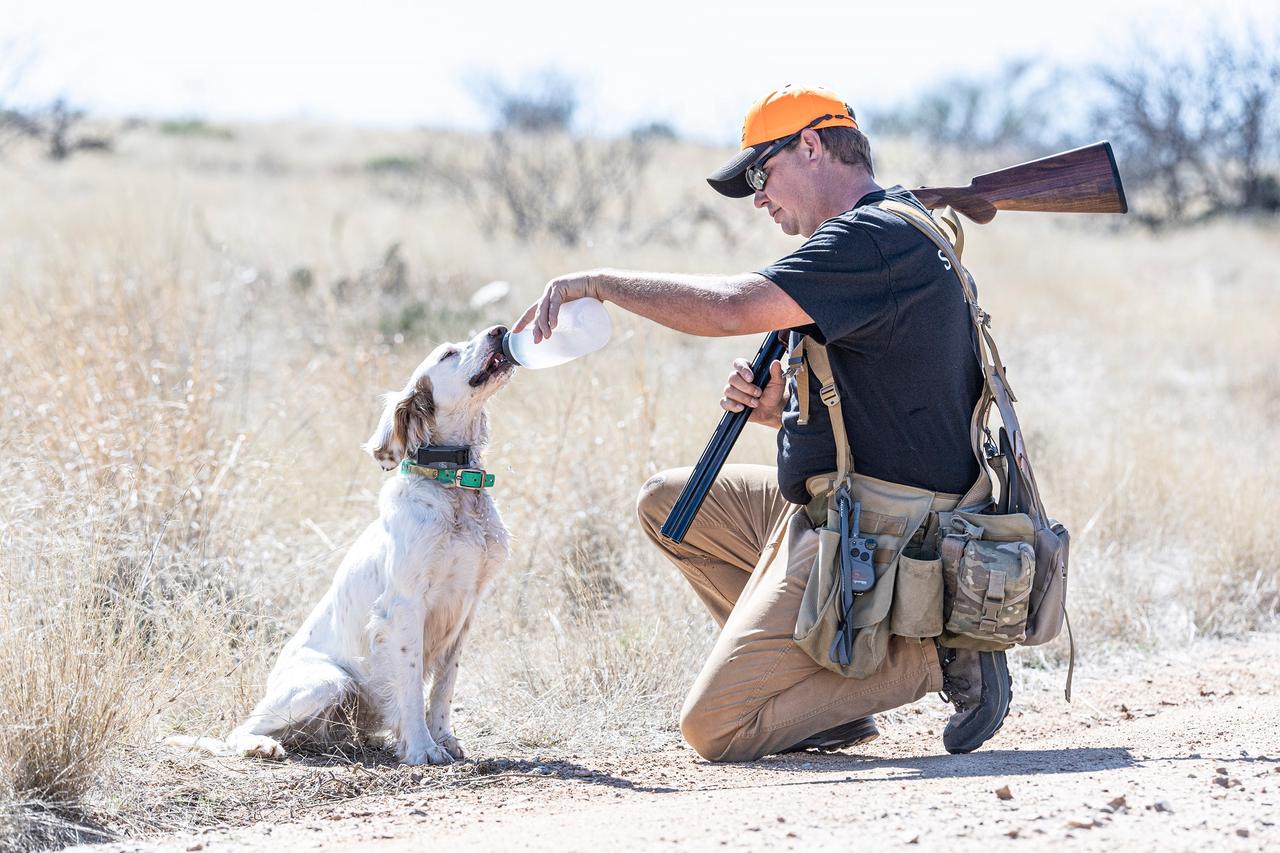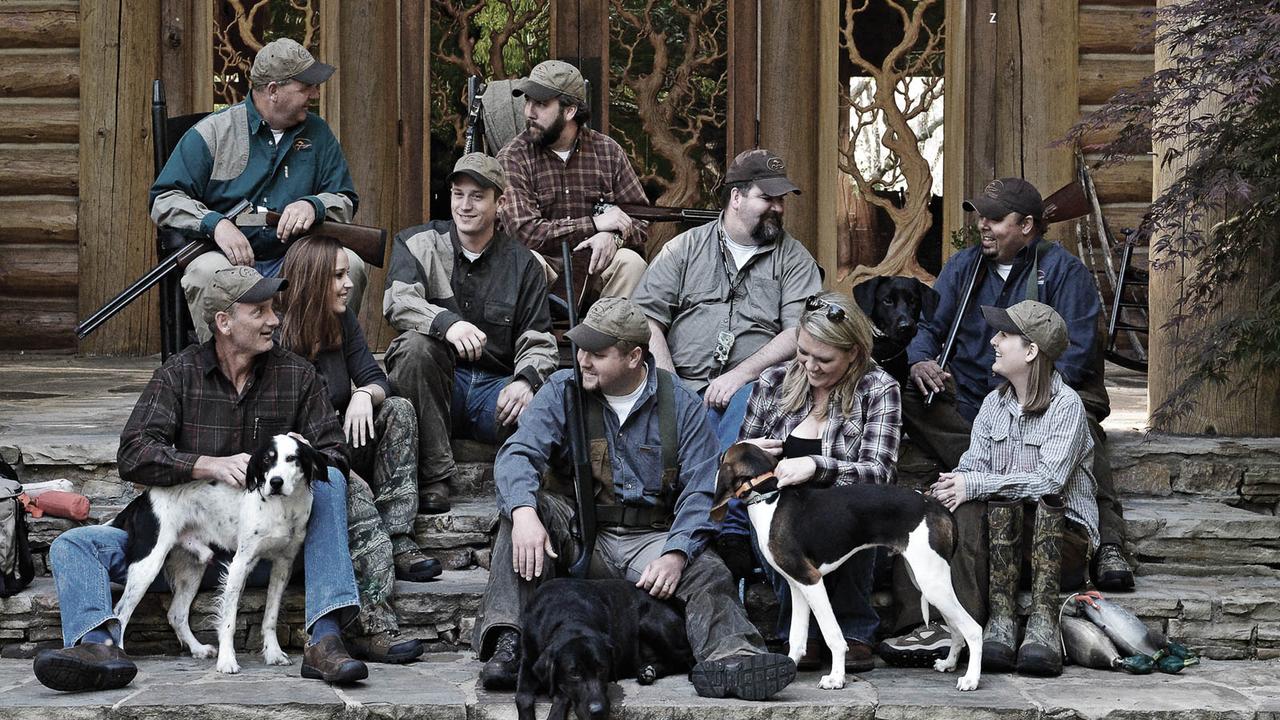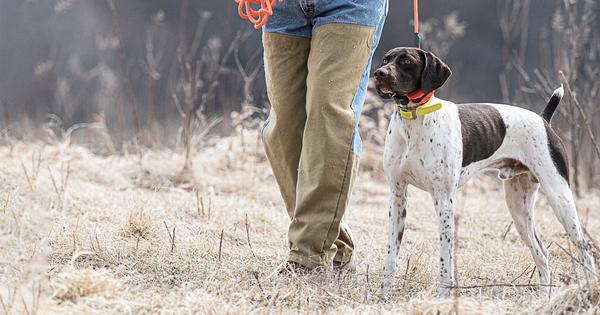
Avoiding and Dealing with Heat Emergencies
Posted by The SportDOG StaffIn any discussion about hunting dog health in the field, one theme repeatedly comes into the conversation: A dog doesn’t know when to quit.
Hunters speak admiringly of hero dogs that never give up. We use words such as “bird-crazy” and “hard-working” to heap praise on those dogs that would seemingly rather run themselves to death than rest. And therein lies the problem.
Take some time to understand the many factors that can lead to a heat emergency, prepare for your outings to avoid such an emergency, and then have an action plan in place to deal with the Big 3: heat stress, heat exhaustion and heat stroke.
Breed, Color and Body Type
Some dogs handle heat better than others. A thin-coated English Pointer that hunts quail in Georgia is a completely different animal than a Labrador Retriever that’s been bred to handle the rigors of waterfowl hunting in freezing weather. They both are susceptible to heat-related emergencies, but the pointer will fare better in warm conditions, all else being equal.
SportDOG Senior ProStaff LTC Jim Morehouse has been training, hunting and guiding in Arizona for decades. His main breed of choice is the German Short-Haired Pointer, and he identifies a distinction about coat color being a factor in handling heat.
“Lighter-colored dogs seem to perform better in hot weather. I would never choose a dog based only on its coat color, but because I live in the Southwest, I really favor predominantly white shorthairs,” Morehouse said. “A lighter coat is absolutely an advantage when it comes to handling the heat. Let me emphasize that I have nothing against a liver-colored shorthair or any other dark-coated dog, but in the heat, lighter is better.”
Wet Dog, Cool Dog … Sometimes
Another point about hot-weather dog health we hear repeatedly from sporting dog veterinarians is to not think that a wet dog is automatically a cool dog. SportDOG Brand Senior ProStaff Tom Dokken made this point in his “Retrieve” column in Gun Dog Magazine when he quoted veterinarian Dr. Jennell Appel about summertime training.
“I find that we can have a false sense of security about water,” Appel said. “We all assume that a dog’s body is going to cool down in the water. Swimming is a whole-body exercise and it’s actually more stressful than running, because the dog is using every muscle to propel itself through the water, and to keep its body buoyant. All of that really heats up a dog’s internal body temperature.”
There’s an oft-repeated theory that no matter what the air temperature is, as long as a dog is wet it will benefit from the cooling effect of evaporation after it exits the water.
“While this effect is certainly real, you do need to pay attention to the water temp as it relates to the air temp and don’t assume that because your dog is wet it’s automatically cooling down,” Dokken explains. “Shallow training ponds can get incredibly warm. So be sure to get your dog into some shade after a workout to start the cooling process.”
Heat Emergency: Know the Signs
If your dog gets into trouble, the best thing you can do is get to the nearest vet. Where’s that? Well, that unfortunately has been a real question for traveling hunters who find themselves in the middle of nowhere, far from home.
Before any trip, research the names and numbers of veterinarians in the area you’ll be visiting. IMPORTANT: Make note of their emergency hours, because emergency care and location for a given vet might be different than their main office. Punch all of this into your phone and share it with your hunting partners so you don’t have to waste time searching for it when minutes matter.
Below is a brief summary of heat-emergency symptoms and field treatments you can apply before or during a speedy trip to the vet.
Heat Stress
Symptoms:
- Increased thirst and panting
- Tongue appears wider or flatter
- Saliva is pasty
- Dog seems slower and less focused than usual
Care:
Stop and get to shade; soak paws and belly with water; apply rubbing alcohol to ears, armpits and groin to help dissipate heat; check temperature (normal is 100 to 102.5 F); consult vet to provide symptoms’ details.
Heat Exhaustion
Symptoms:
- Panting becomes uncontrollable
- Dog appears weak and/or stumbles
- Vomiting and/or diarrhea
- Mouth, gums and/or nose are dry
- Muscle tremors
Care:
Do everything you can to cool your dog like you would in a Heat Stress situation, but now getting to a vet IMMEDIATELY is a MUST. On the way, lie the dog on a wet towel and get it in front of your vehicle’s fan or an auxiliary fan.
Heat Stroke
Symptoms:
Untreated heat exhaustion can lead to heat stroke.
- Dog is uncoordinated and may become unresponsive or collapse
- Urine is dark or non-existent
- Dog may go into a seizure and possibly a coma
Care:
Same as Heat Exhaustion. You MUST get to a vet NOW.
Avoiding heat-related emergencies is the goal but having an action plan in place before hitting the field can be the difference between bringing your dog home that day or not.

The SportDOG Staff
Related Products
FieldSentinel™ 825
FieldSentinel™ 1825
Related Articles



